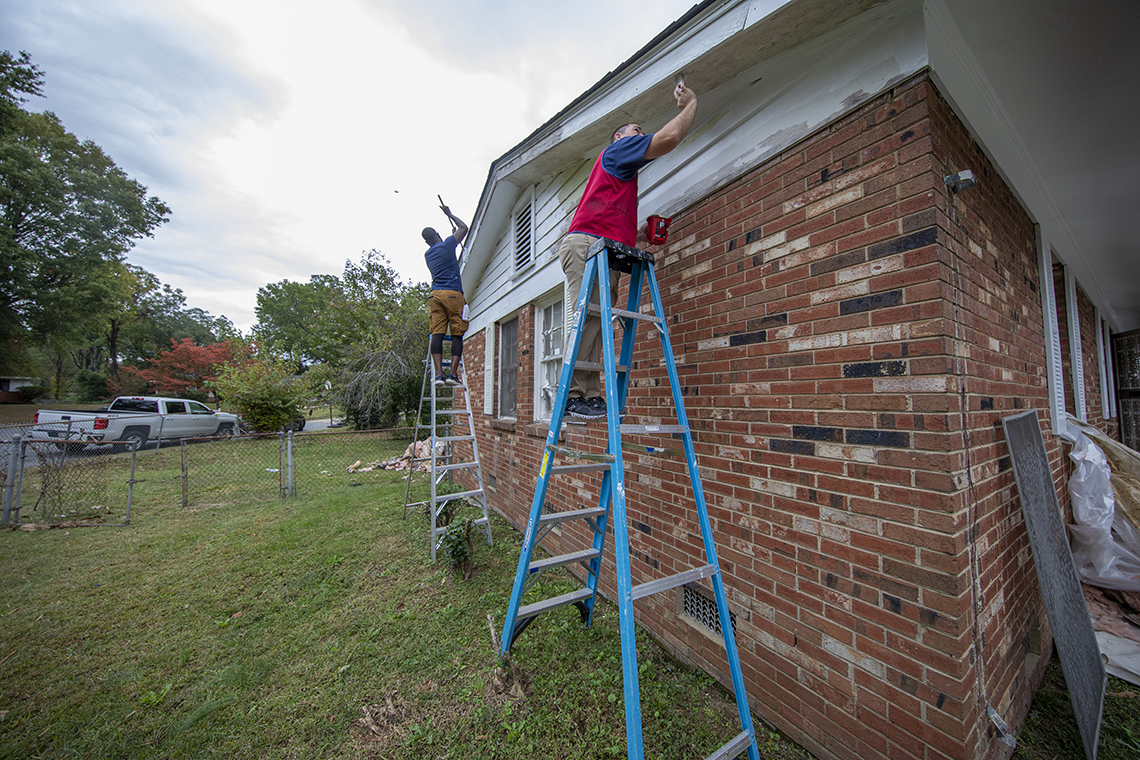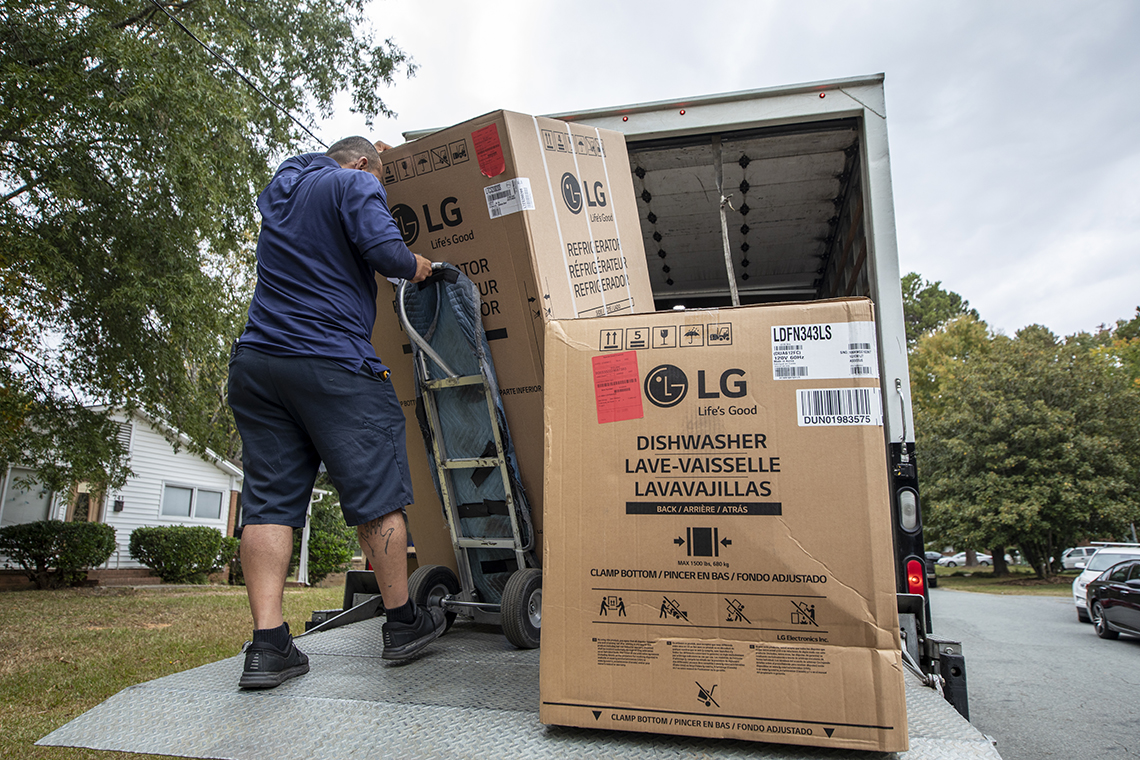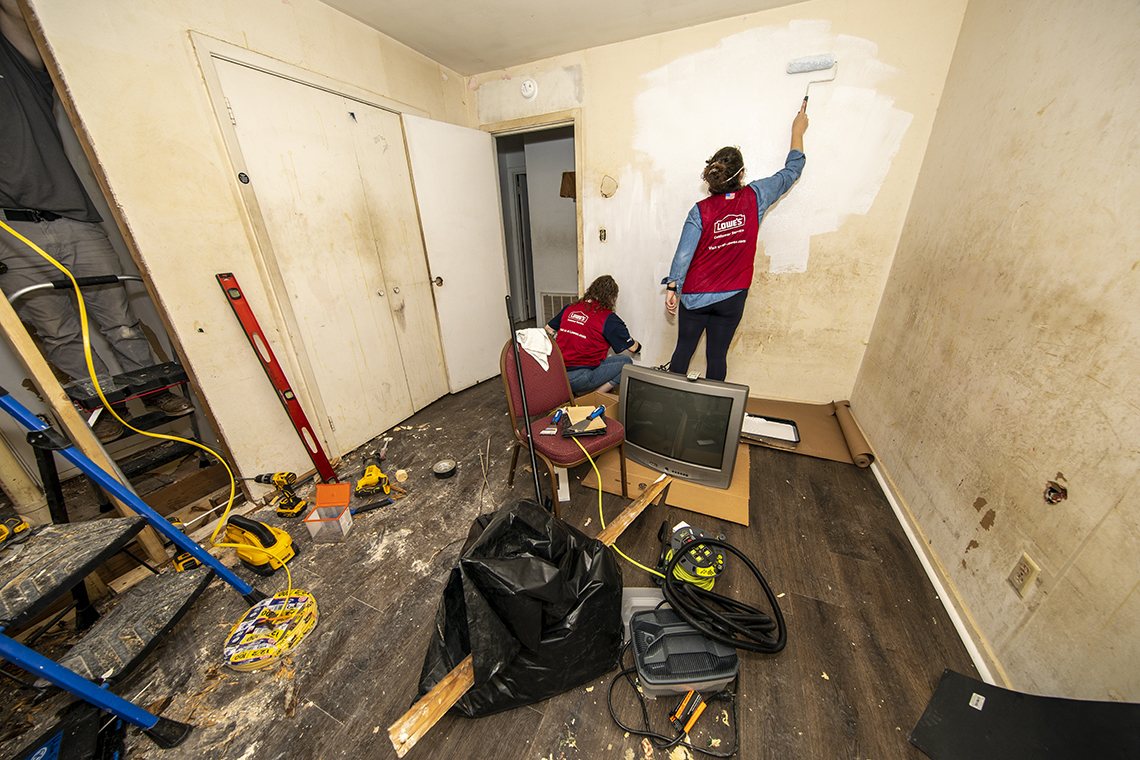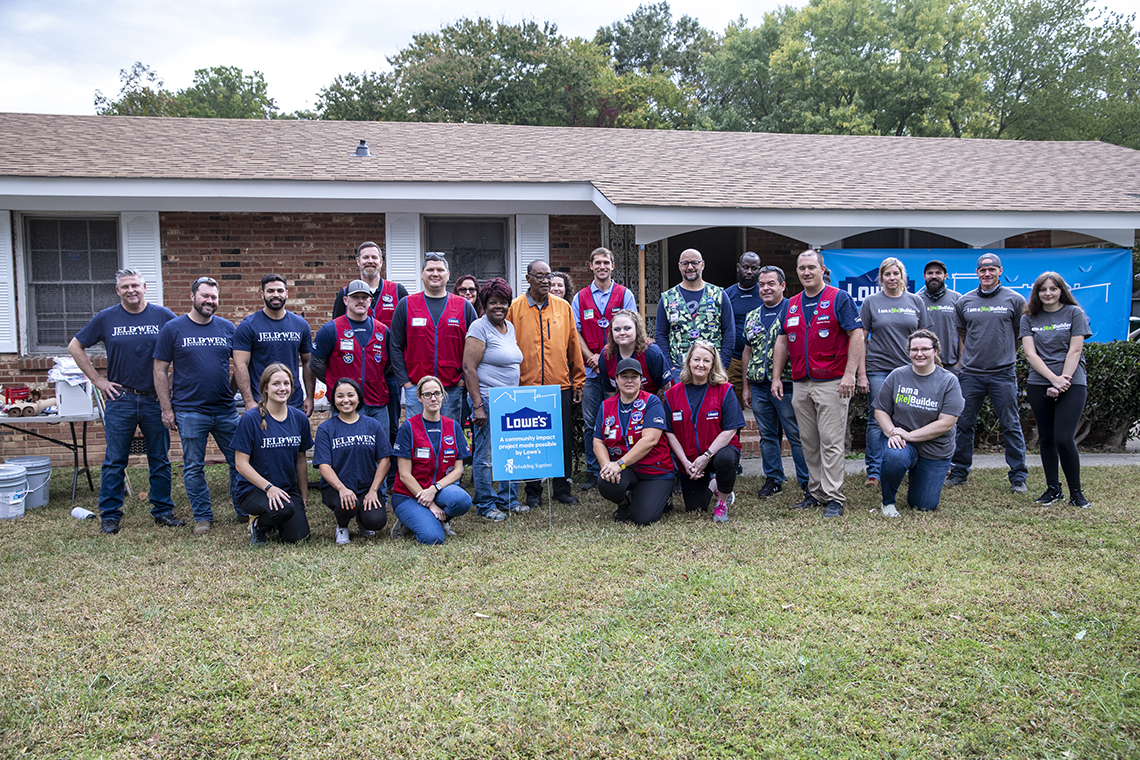Every home needs repairs eventually, and Rebuilding Together of Greater Charlotte, Lowe’s and several partners are making sure one family’s upgrades help the bottom line by honoring an Army veteran’s service and celebrating ENERGY STAR Day on October 12.
“Rebuilding Together and Lowe’s are longtime partners, and we know the importance of making sure we’re replacing or repairing homes with materials that will last while also saving the homeowner money on energy bills,” said Beth Morrison, executive director of Rebuilding Together of Greater Charlotte.

“Celebrating ENERGY STAR Day helps us emphasize that when the time comes for repairs or replacements, we really encourage families to invest in products that increase energy efficiency while decreasing their electric bills.”
Gary and Pat Turpin moved to the Hidden Valley neighborhood of Charlotte in 2000, after Mr. Turpin served in the Army, where he received the National Defense Service Medal among other honors. Today, Mr. Turpin is visually impaired.
“While homes in Hidden Valley are 40% smaller than the county average, they consume 46% more electricity and 8% more natural gas than the average home in Mecklenburg County,” Morrison explained.
Volunteers from Lowe’s and Jeld-Wen converged on the Turpins’ home on ENERGY STAR Day, Oct. 12, to install high-efficiency windows and doors donated by Jeld-Wen, ENERGY STAR-certified kitchen and laundry appliances donated by LG and attic insulation from Owens Corning.

“ENERGY STAR-certified products offer peace of mind for customers who want to invest in products that will do double-duty for their homes and their budgets, keeping energy costs low while helping households run more efficiently,” explained Chris Cassell, vice president of Corporate Sustainability, Lowe’s.
With support from a $350,000 grant from the Lowe’s Foundation in March, this project is one of more than 40 critical home repair projects planned for the Hidden Valley neighborhood as part of RTGC’s Building a Healthy Neighborhood program. Hidden Valley has a concentration of older single-family homes that are significantly less energy efficient than others across the country, on average.

According to the EPA, “A recent ACEEE study revealed that low-income households pay up to three times more on home energy costs, as a proportion of total income and some are spending nearly 20% of their income on utility bills.”
The Turpins recall wonderful memories of raising their three children in the home and hosting many gatherings with family and friends. While they love their home, Mr. Turpin has gone blind, and it has been very difficult for them to keep up with repairs and maintenance.





